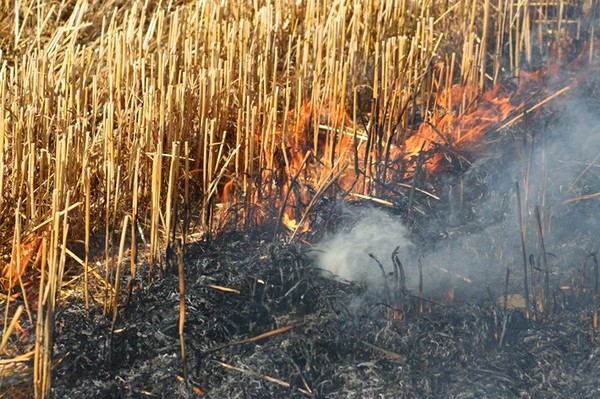To sell or to incorporate straw is a debate that’s been slowly hotting up over the last few years. The heightened interest was caused initially by the dramatic increase in the cost of phosphate and potash. This year a shortage of good forage is enlivening the debate, and there is also a call by some excellent black-grass growers to enable some straw and stubble to be burnt in an effort to keep the weed under control.
Let’s deal with the last point first. Stephen Moss of Rothamsted Research says that straw burning, on average, controls around 40% of freshly shed black-grass seed, and it can be as high as 70%. That sounds impressive but it only partially lifts the pressure on herbicides. Perhaps of equal importance, the survivors can be stimulated to germinate. Hence, there is little doubt that straw burning would contribute to keeping black-grass under control, but it is likely that it wouldn’t make a hopeless situation manageable without the adoption of other cultural measures.
Much of the debate on whether to bale or to incorporate straw centres around the possible delays caused by baling and carting which is likely to be more significant during a wet harvest, alongside the value of straw as a provider of plant nutrients. The additional field traffic, much of it out of tramlines, from equipment that may be fitted with road tyres could cause localised soil structure problems.
There is also the value of straw as a means of increasing soil organic matter, which has been the subject of a long term experiment at Morley. We started in 1983 comparing straw burning, baling and incorporation. However, over the past 20 years we’ve been investigating the value of straw produced from a range of nitrogen doses, ranging from 0 to 250 kg/ha, applied to continuous wheat. Obviously the plots receiving the highest doses of nitrogen have produced the most straw.
After around 20 years the organic matter is around 1.7% in the plots receiving the highest N doses and 1.55% in the plots receiving no N. It doesn’t sound a lot and some would say that, based on these data, the value of straw for increasing soil organic matter isn’t that significant. However, simple tests on the soil suggest that there’s a remarkable difference in the aggregate stability of the soil. In practice, this means that the soil is much more resilient to cultivations and rainfall and also, it may be easier to prepare a seedbed.
Can a difference of 0.15% in organic matter be that significant? Perhaps, but in my opinion there may be another significant factor - microbes! Incorporating organic materials, including straw, on an annual basis increases the soil biomass, which is made up of soil bacteria and soil fungi. These produce enzymes whose activity results in the production of substances that help to bind soil particles together into more stable aggregates.
There is a host of scientific evidence to support the value of an increase in soil biomass, as well as the practical experience of arable farmers when we first returned to straw incorporation in the early 1990s after years of burning. After only a couple of years, farmers reported that the land was much easier to work which was attributed to increases in soil organic matter. However, the organic matter difference would have been minute after just a couple of years of straw incorporation. The ‘workability’ must have been due to something else that can build up more rapidly than soil organic matter which I believe must have been soil microbial biomass.
Unfortunately, the increase in soil biomass from the incorporation of a crop residue lasts only around 18 months, so it has to be a regular practice to maximise its value. I’m not sure how persistent the effects are from incorporating organic manures. However, you know who to thank if you don’t have access to organic manures but you regularly incorporate your crop residues and the soil is in good condition. Soil organic matter is not everything.

